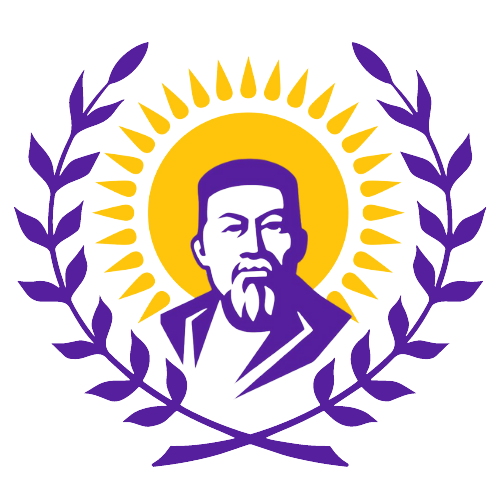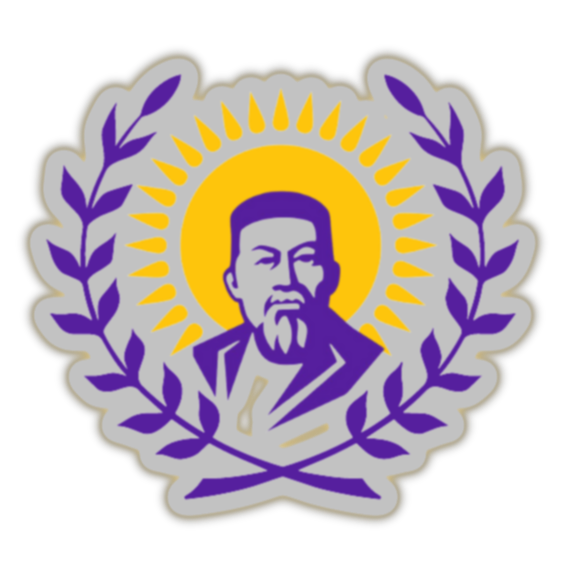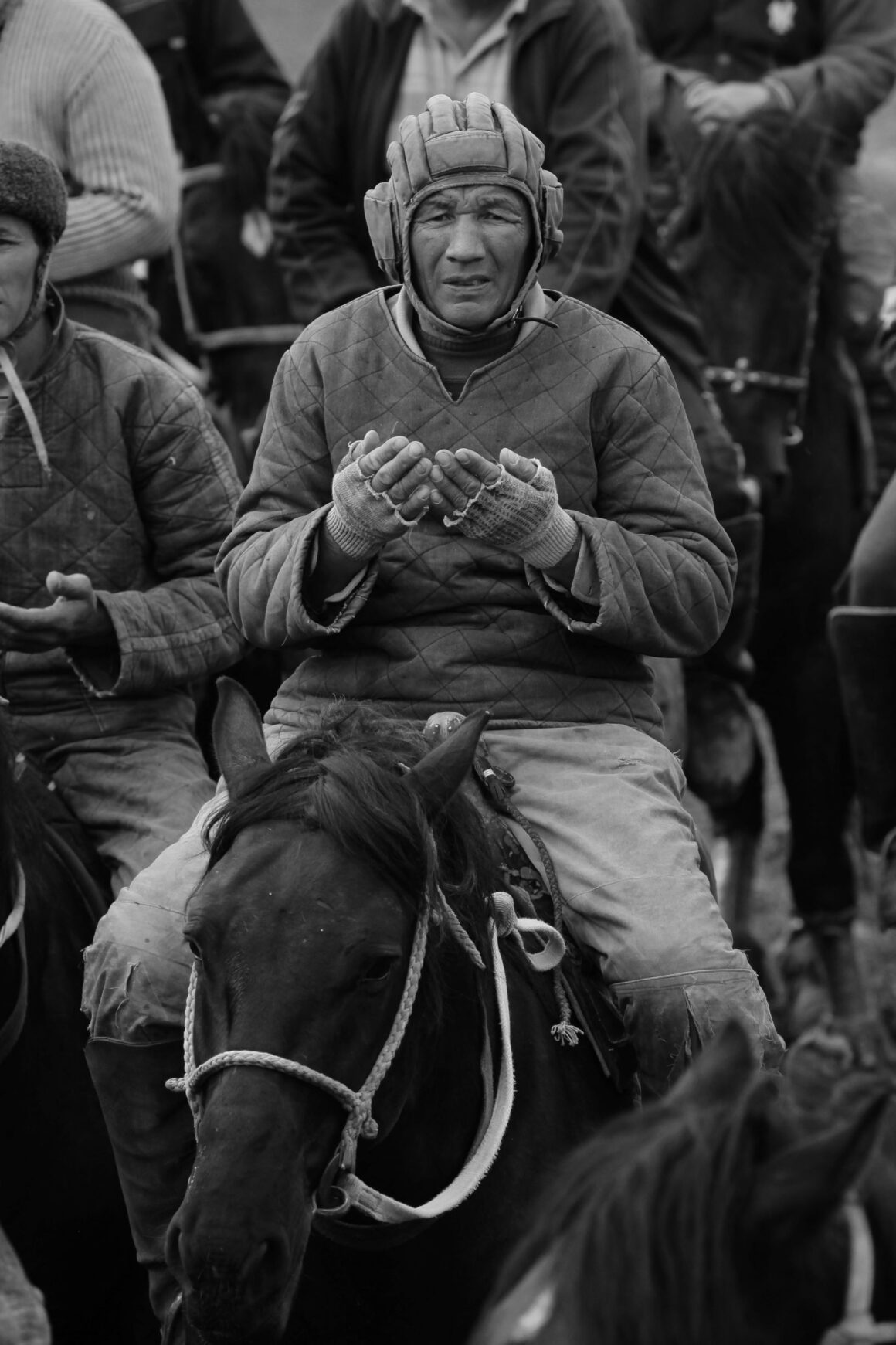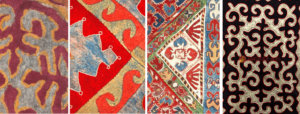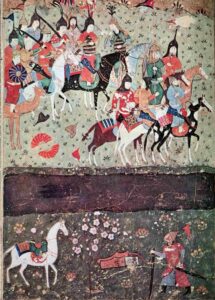“I wish to see kok-par players – “Steppe Wolves” from Central Asia on the world’s best catwalks. They are not the refined Europeans, just ordinary guys from a remote aul with crooked legs and scarred faces, bruised from the kok-par fights. Their clothes are soaked in sweat, horse urine, and dust from steppe winds. They are real, they are not ideal doll-like models from fashion magazine covers. They walk in high heel boots, which are not supposed to make them pretty but are perfect for riding horses so that the feet do not jump out of the sti1rrups during the kok-par. I would like to see exactly this kind of show. It could be fantastic to discover a different perspective and watch kok-par boys from Central Asia in a world-class fashion show, pulling the flag-korpeshe over. This is not to imitate the Europeans and Americans, but on the contrary, to turn the eye to Central Asian steppes,” – says Said Atabekov, a prominent Central Asian artist.
Originally published in 2020
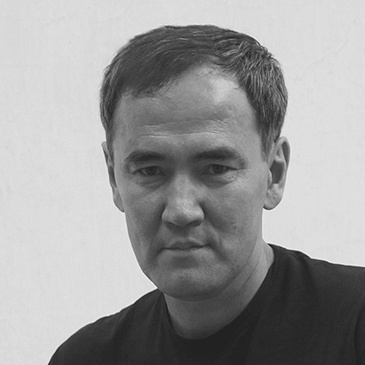
Said Atabekov is a key personality in the Central Asian contemporary art landscape. He experiments with a variety of media, from installations and performances, to photography and video. Born in 1965 in Bes Terek in the Tashkent Oblast of Uzbekistan, he studied at the Shymkent Art College named after Kasteev and was engaged in training of young artists and organizing art exhibitions. He began his career during perestroika in the Soviet Union which enabled him to pursue greater artistic freedom. In that time, he founded the art-collective “Kyzyl Traktor” (Red Tractor). In 2011 Atabekov was honored with a Prince Claus Award.
Atabekov was born in a settled village in Uzbekistan, but got charmed with the wide steppes and now lives in Shymkent, Kazakhstan. “I was not born in a yurt, but I am very attracted to the open space of the steppe. Kazakh music, horizons, steppe, horses…”
In this interview, he reflects on different aspects of nomadic culture. He is eager to tell as much as he can to the whole world about his passion for the Great Steppe and he does this through his artwork.
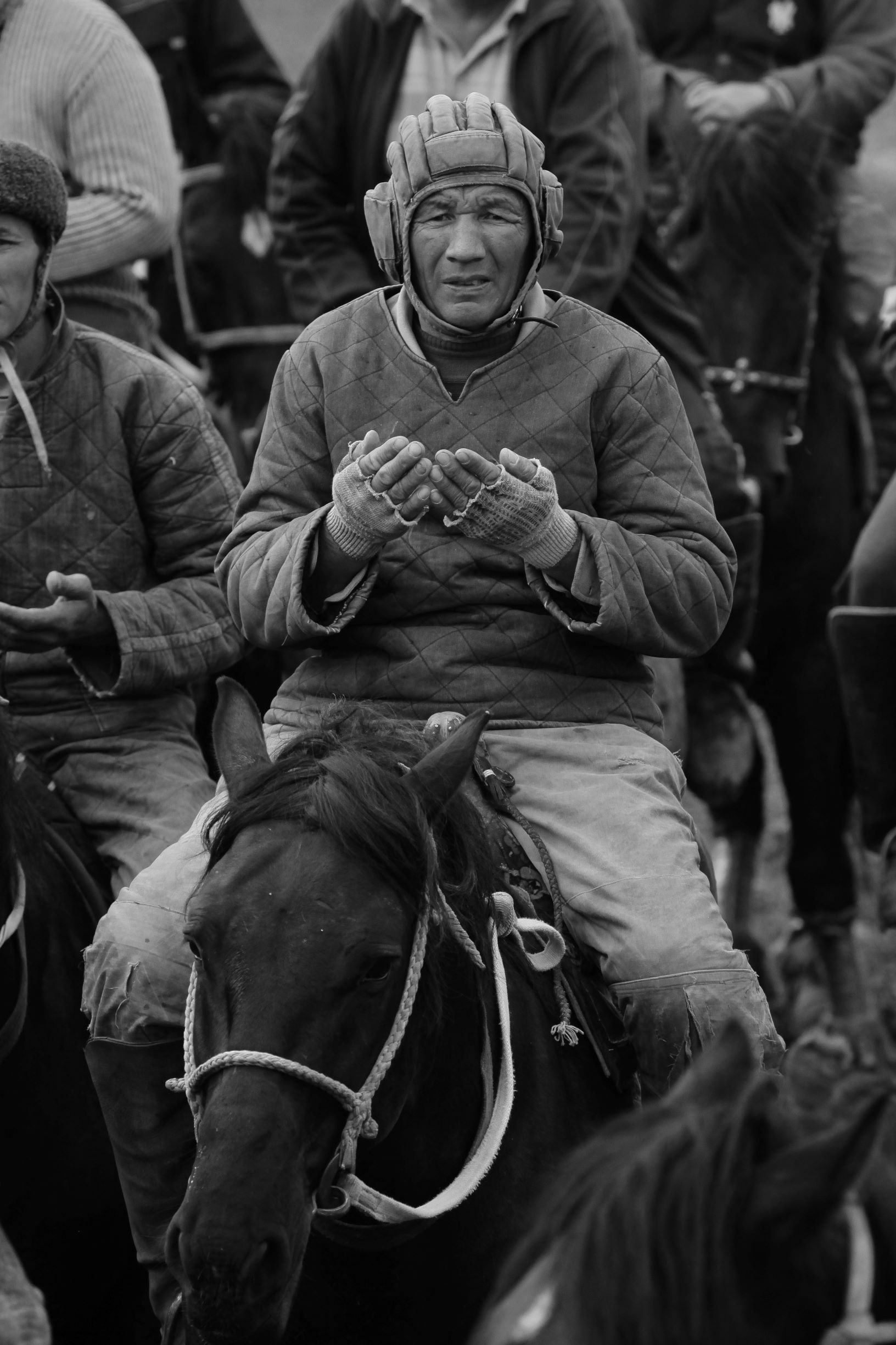
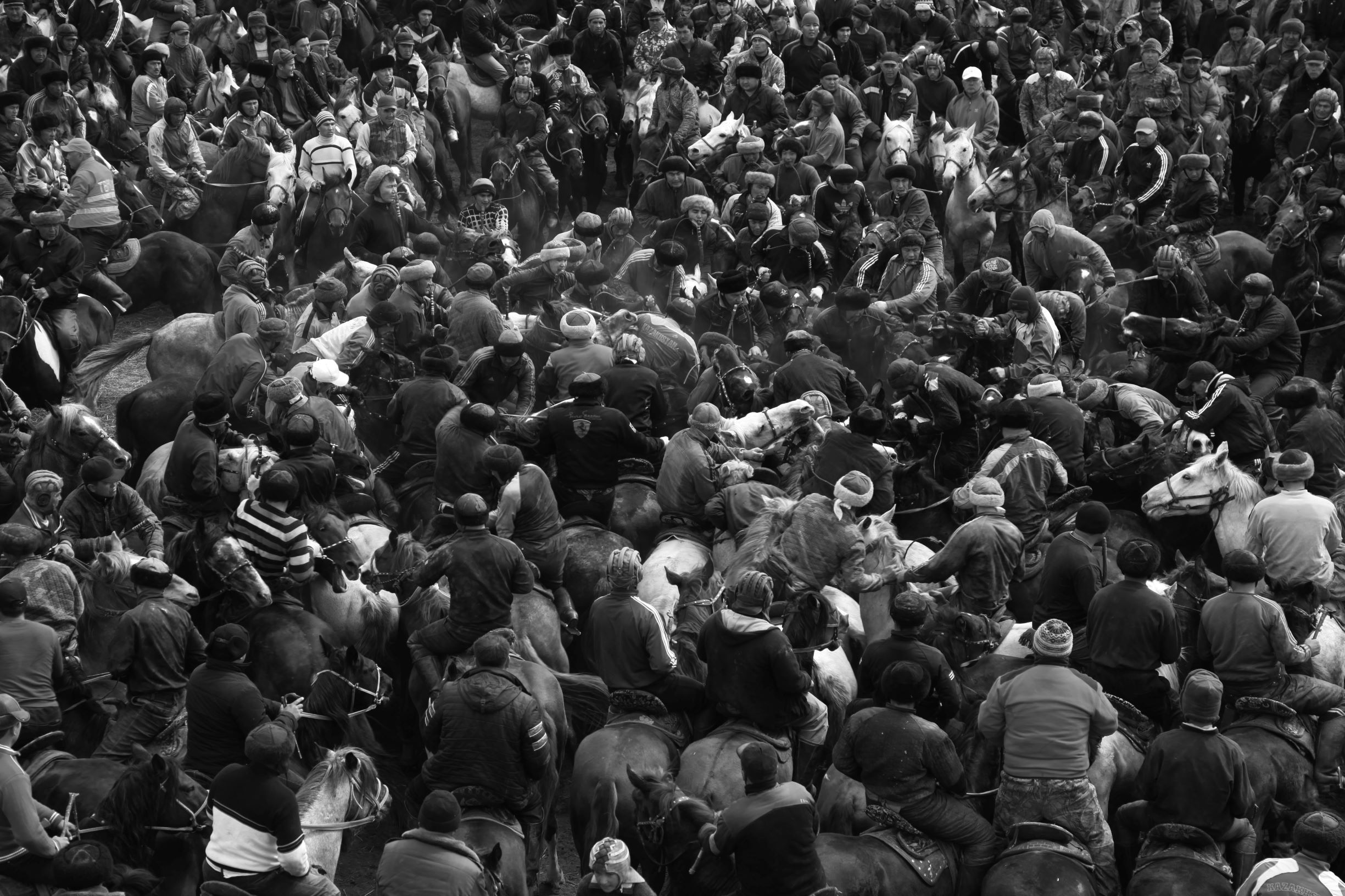
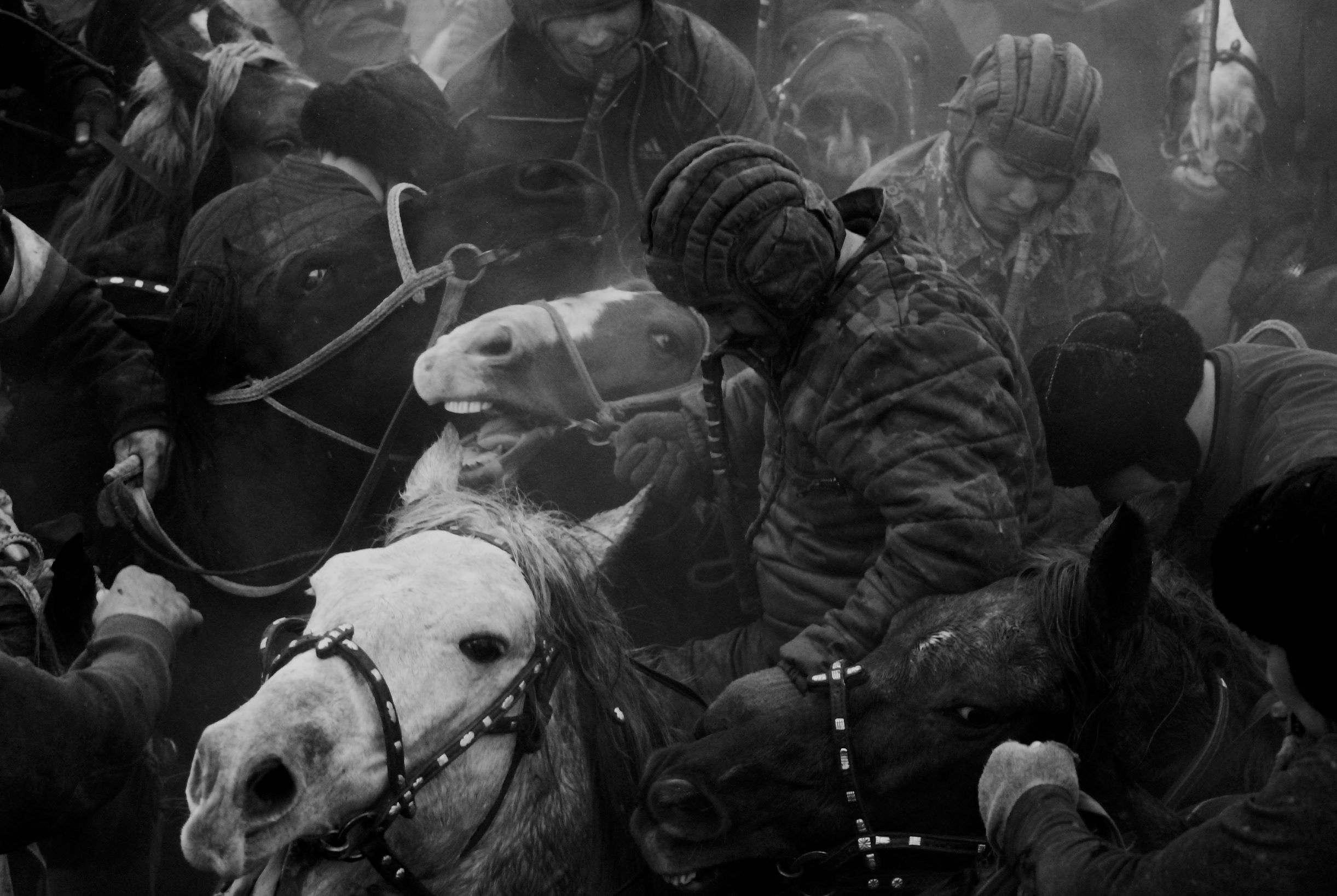
Sometimes Central Asian artists cannot escape temptation and their works have a distinctive national flavor: horses, mountains, steppes, beautiful girls with moon-like faces and courageous heroes. Your works about nomads and steppes do not follow this tendency, or this is much more complicated?
I can’t say it’s bad or good to paint horses, but this is our past. The transition from a nomadic life to a sedentary way of life is hard to endure, and I felt it through my own experience. It is hard for me to live in the city. I can’t stop thinking about going to the steppe, to the open space. Especially when I see these typical boxes- khruchevki and houses from the 104/105 series built in Soviet times. Any theme can become a good creation and horses convey the national flavor well. I am trying to find myself in my works, impersonality has no value to me. I aspire to shed light on the traditions of the past years, because this is how people of the Steppe used to live. On the other hand, it is also interesting to move to another unexplored level. It is important to learn to listen to the Great Steppe. At the same time, I enjoy exploring history and legends, though it could not be easy, as archival documents are usually difficult to access or simply useless.
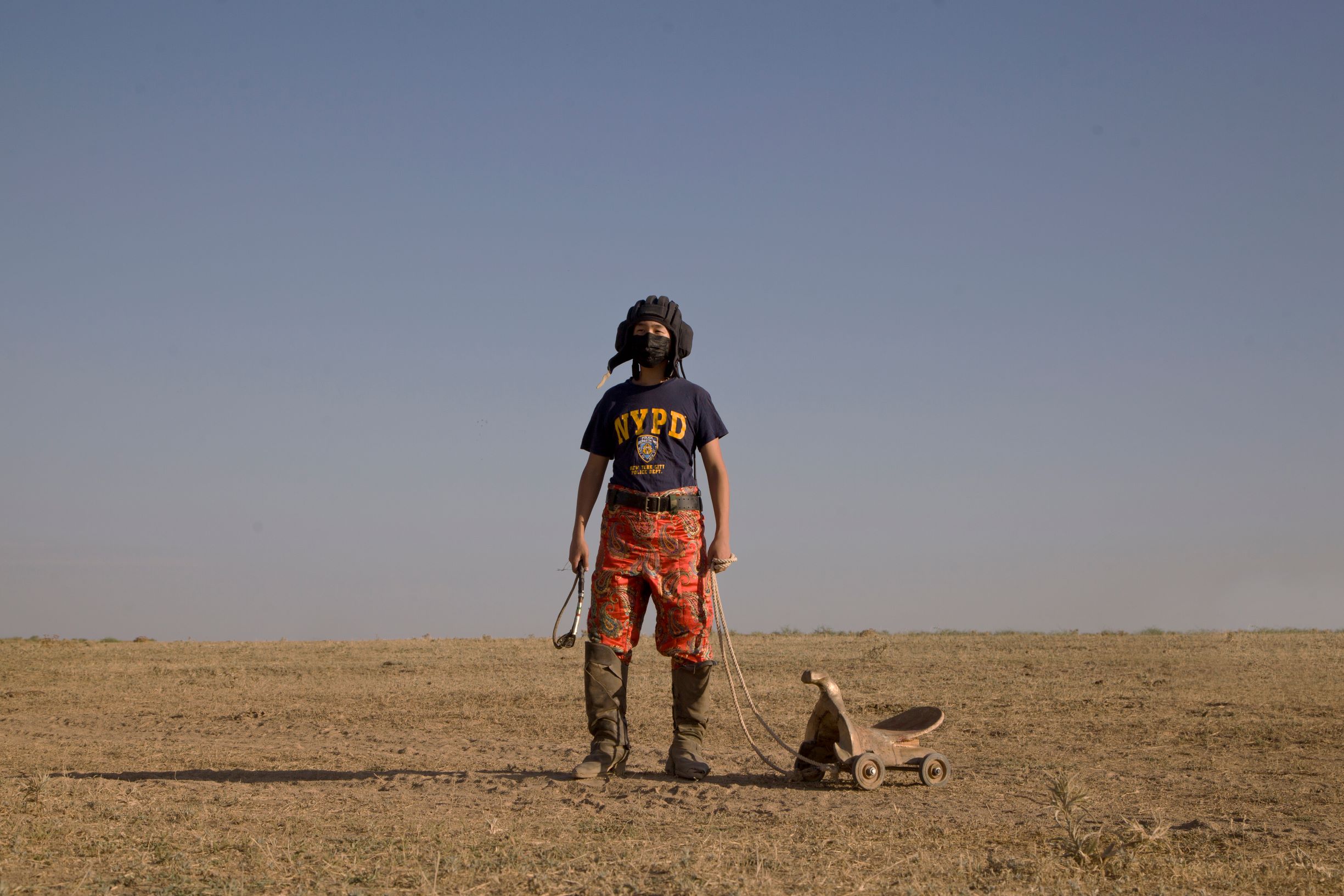
I first learned about your works through a series of photographs called “Way to Rome,” and I was struck by this diversity of flags used with this piece. Immediately there was an association with the Great Silk Road – namely, as flags are milestones in history and as markers of territories. What is this project really about and why flags?
The project “Way to Rome” goes beyond the term and meaning of “Silk Road.” Its creation began with a reflection on the American flag. After all, millions of people on our planet dream of becoming citizens of the United States. Frankly speaking, I thought about that, but after spending some time in the United States, I realized that I will not be able to live there. I decided to make Flags-korpeshe[1] (blankets) and to stay in my city Shymkent.
I believe it is better to miss the USA than to miss Shymkent and live in the USA. I am happy to live on my native land, and it doesn’t matter if Shymkent needs me or not. The project itself involves creating flags of every developed country in the world, which our state works to become similar to and takes as an example to follow.
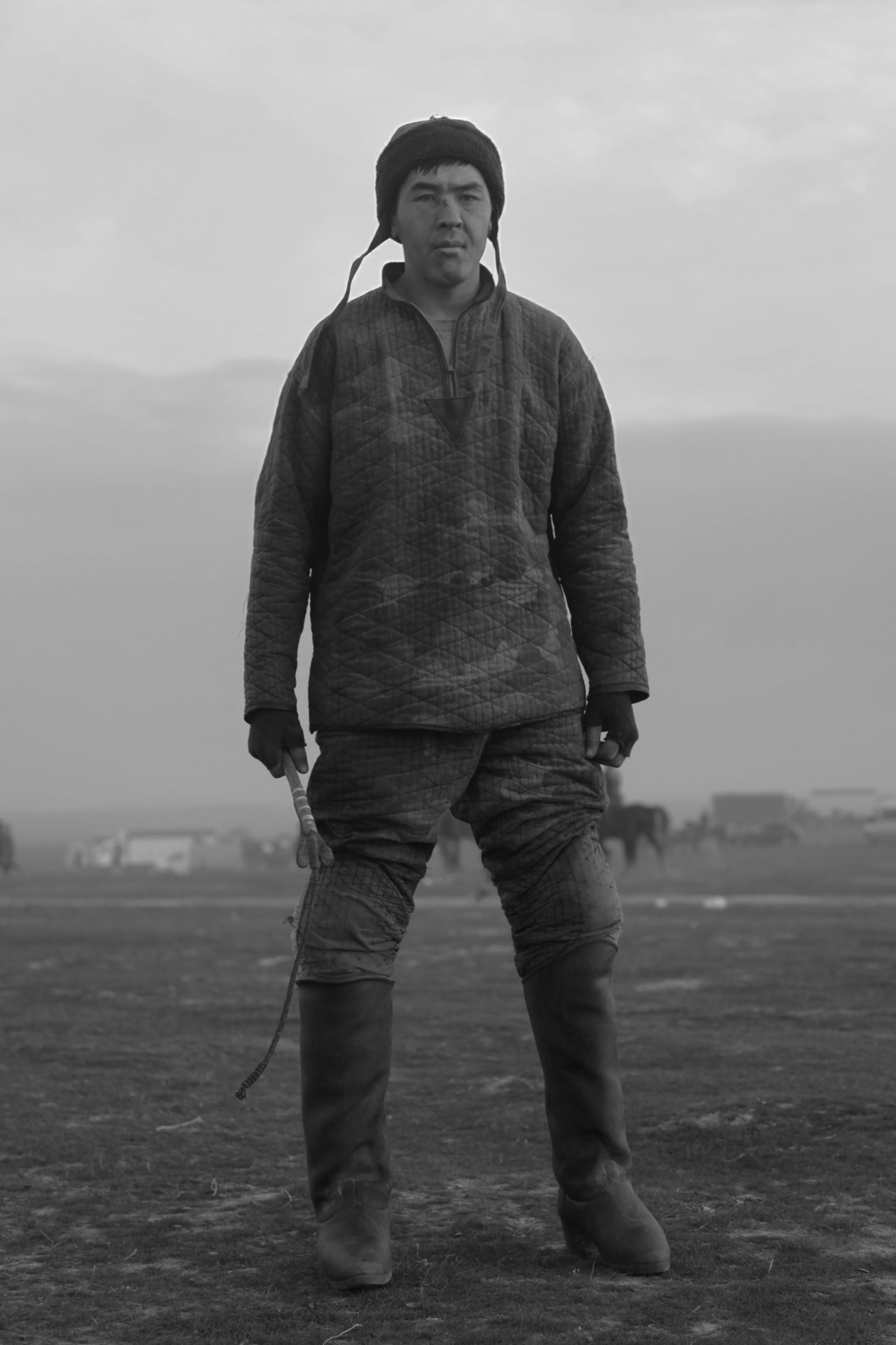
At the Dolce & Gabbana show, sophisticated male models were walking on the catwalk with pants tucked into boots and holding in their hands a goat. Their haute-couture looks contrasted snow-white goat accessories like wolves and goats; this opposition is conceptualized by the Kazakh artist’s piece “Steppe Wolves”.
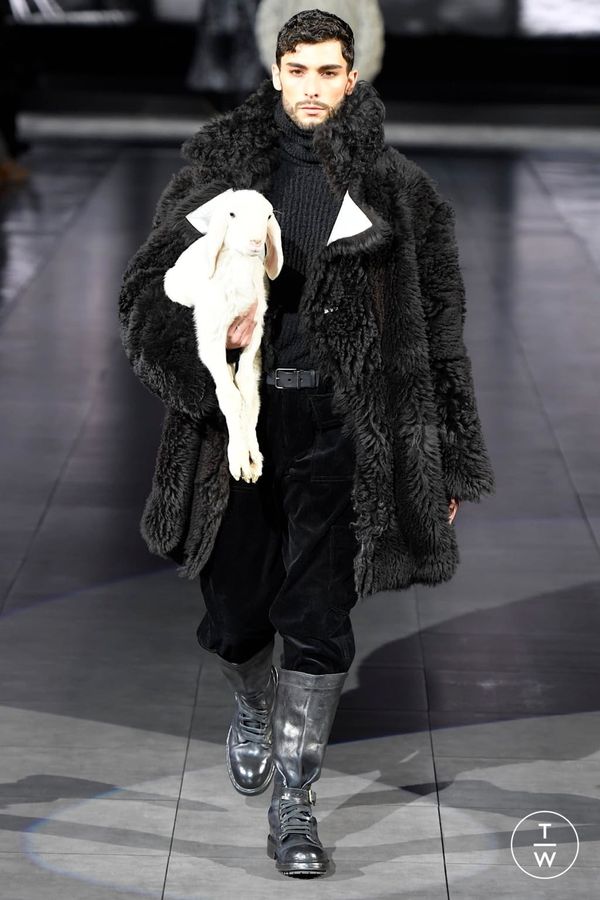
Flag blankets are not your only textile experiment, in “The Stories of the Great Steppe” you create the image of a courageous Kok-par player. Here, you introduced globalization into nomadic traditions and way of life.
This piece is a series of photos entitled “Steppe Wolves” where logos of different brands including cars, clothing, and country names are used. I was trying to use images of tankers, paratroopers, marines, customs officers, airport employees, soccer players, etc. Documentary photos were taken in different areas in southern Kazakhstan from 2010 onward. The traditional game Kok-par is very popular among the nomads of Central Asia. The game itself embodies the image of our modern world, which is governed by fierce competition. When you watch this game, the participants are fighting for the “goat carcass”, over the steppe playing field converge several thousand riders appearing almost battle-like. They struggle to find the best place under the Sun, because in space even dust is trying to find its place: in a natural disaster, a devastating flood, a rapid whirlpool, or volcanic lava. Who will be rewarded with luck is decided by an invisible, Heavenly Judge.
Do you use historical data: photos, written and oral testimonies to create the image of a Kok-par player? Or is it the fruit of your artistic and reflective imagination?
In Soviet times, it was forbidden to hold or organize Kok-par games. My friends told me that horses were sold for meat and to whomever could hide them in the steppe. And still the game was played secretly far from the center of the city. People who were caught during Soviet times tell us curious stories about this period. Kok-par players wore tank helmets to denote a number of associations. Perhaps their ancestors defended Moscow from the Germans Nazi in 1941, or participated in the Battle of Borodino in 1812, or perhaps they rode horses a long way across Europe to Paris and Berlin. They took part in the “Battle of the Ice” or in the Middle Eastern campaign, which was led by Hulagu, the grandson of Genghis Khan himself. Although international organizations do not like Kok-par, this traditional game has been organized for several thousand years. Not only Kok-par riders, but also horses participating in it, want to fight and try themself at the game.
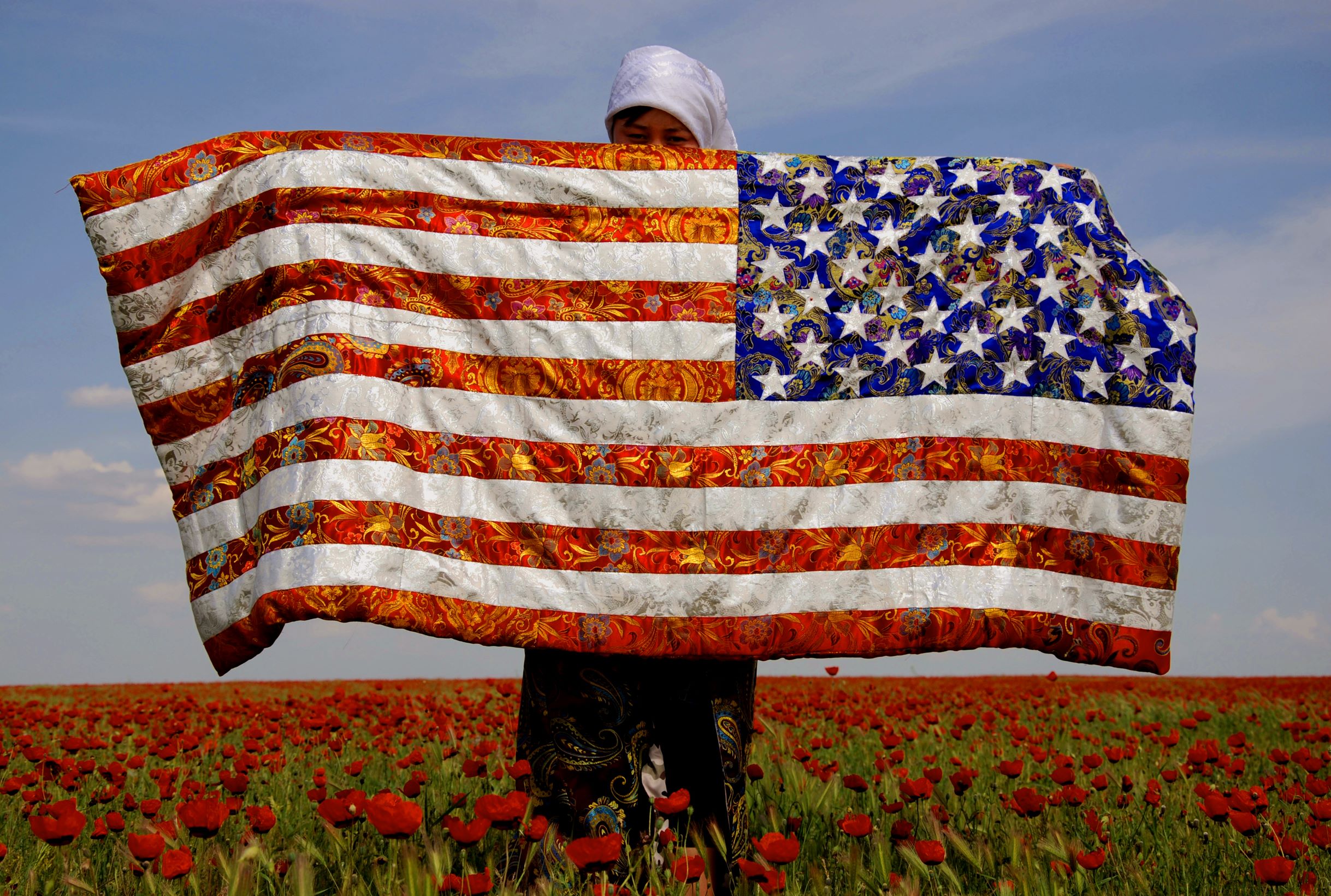
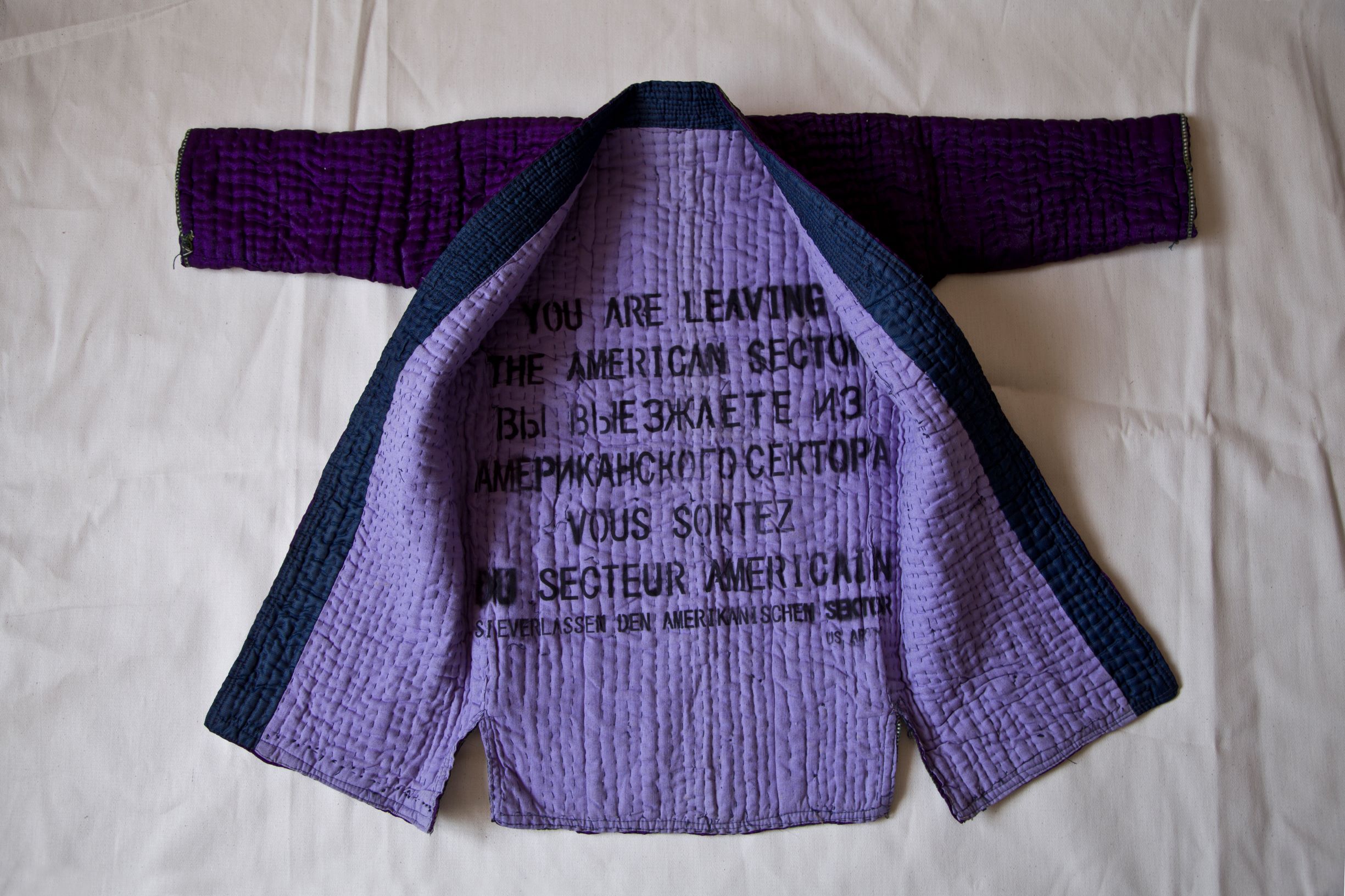
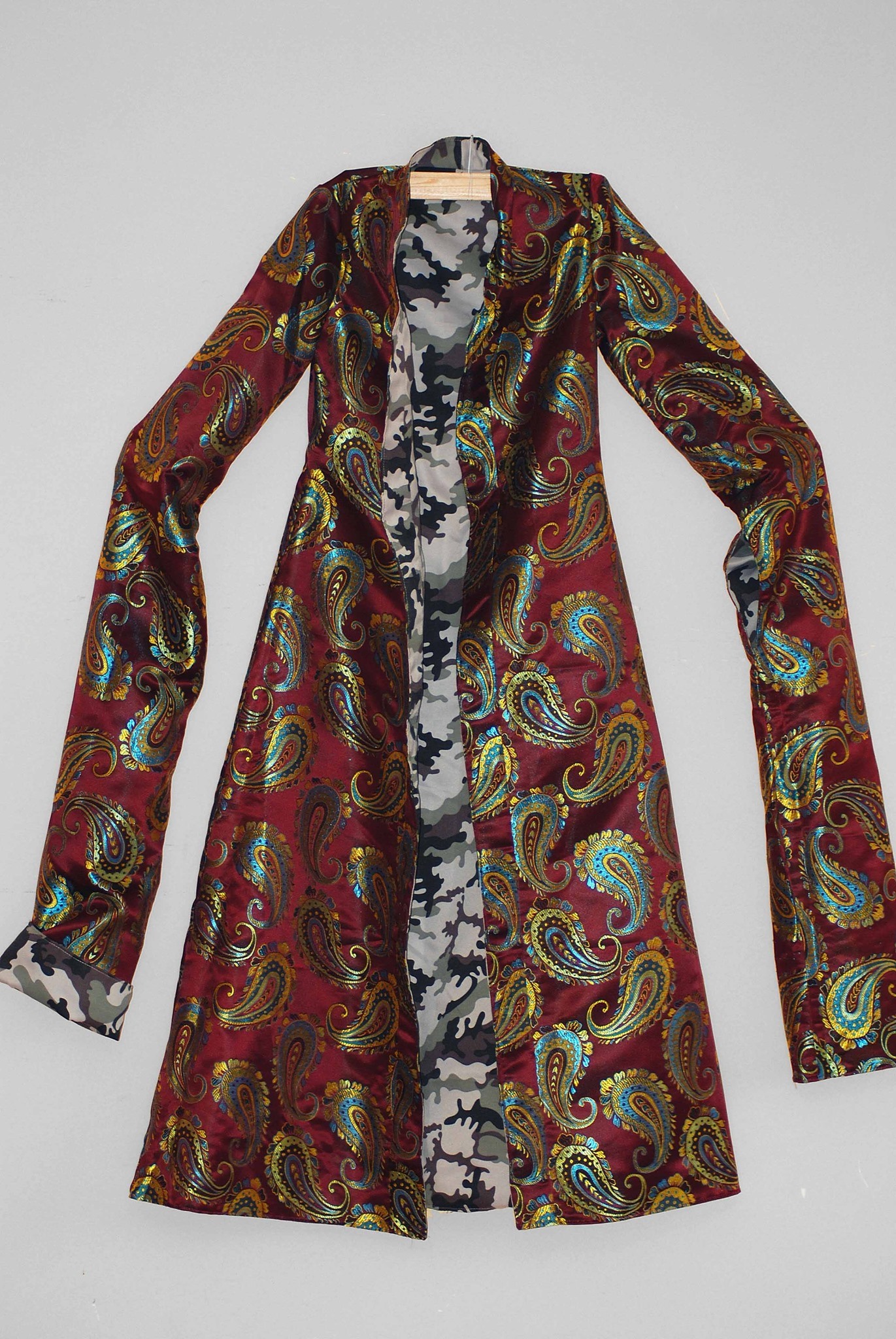
Every piece of your work is unique and should be described and analyzed separately. But if we take a look at the coats “U.S. Marine Corps in Central Asia” and “Genghis Khan’s Suit” they both demonstrate a combination of cotton camouflage and patterned silk fabric. Does that mean you equate Genghis Khan conquest of the Central Asians with the U.S. military operation in the region?
The “U.S. Marine Corps in Central Asia” series of coats and chapans2 was created when U.S. forces were stationed in Bishkek (Kyrgyzstan) and Hanabad (Uzbekistan) in the early 2000s. Those bases once served as military units of the Soviet Union, but several years later the Americans landed in the military bases of independent Central Asian countries. The camouflage fabric, which is used to make uniforms for soldiers, speaks directly to the army theme. Combined with patterned fabric, it embodies the union of cold and warmth, feast and tragedy, victory, and defeat…… Genghis Khan’s camouflage chapan also reminds us about the heroes-batyrs of the past years and the commander’s own complex and controversial personality. While asking questions, I am replying with my works. Thus, the Mongolian Empire is replaced by the “American sector”.
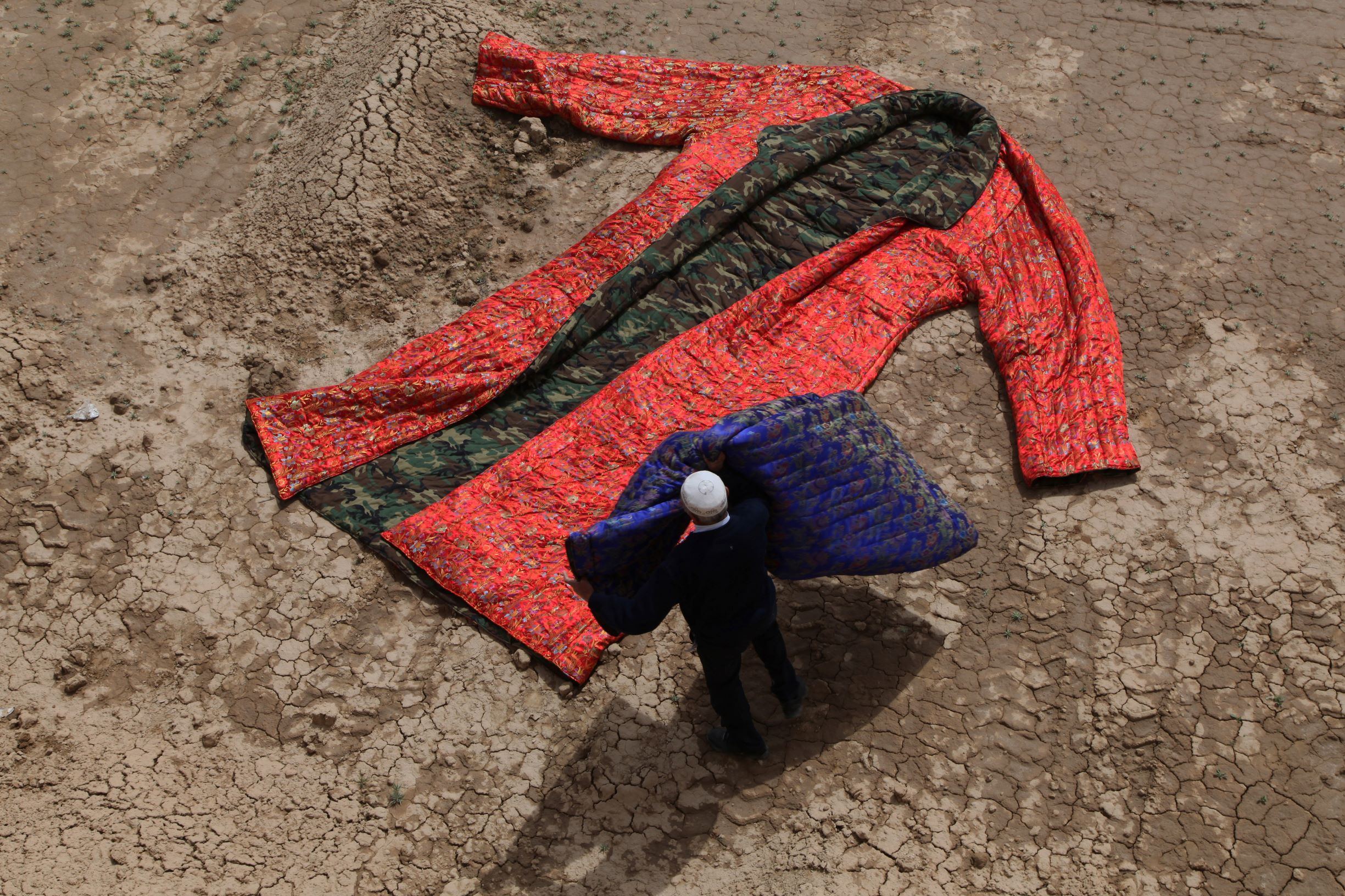
Historical costumes can be a huge resource for inspiration like those which are preserved in Penjikent paintings, ancient miniatures, and photographs. Your textile production partly resonates with historical costume legacy of Central Asia, even if sometimes it is your own interpretation. Have you ever wanted to create a collection of “historical” clothing? For example, the “Modern Dervish” or “Be Genghis Khan” outfits for every day?
I am fascinated by the costumes of past epochs and although at first glance all the costumes of Central Asia are the same, a closer look reveals the smallest details and differences. Only in Kazakhstan, we have different variations of Kazakh traditional costumes in each region. Of course, I have many ideas, but I do not have the experience of a fashion designer.
